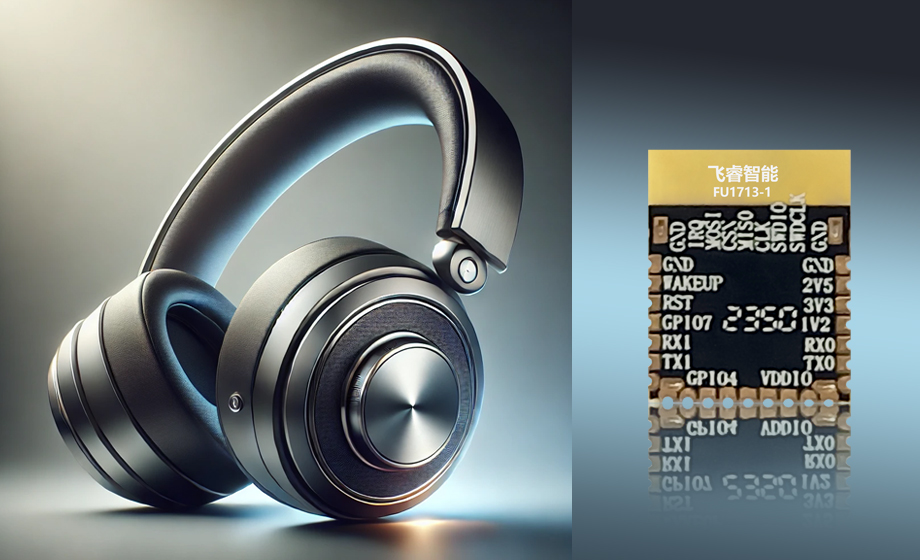Today, with the rapid development of wireless communication technology, Ultra-Wideband (UWB) technology has gradually emerged in the field of wireless audio transmission with its unique advantages. This article will delve into the composition of UWB wireless ranging module and its application in wireless audio transmission, aiming to provide readers with a comprehensive analysis of UWB technology and explore its potential in improving the quality of audio transmission.

I. Overview of UWB technology
UWB technology is a carrier-less communication technology, which uses non-sine-wave narrow pulses from nanoseconds to microseconds to transmit data. This technology has the advantages of high transmission rate, low power consumption and strong anti-interference ability, and is especially suitable for high-speed and low-power short-distance wireless communication. In the field of wireless audio transmission, the introduction of UWB technology has brought innovative innovations to traditional transmission methods such as Bluetooth and WiFi.
Second, the composition of ultra-wideband UWB wireless ranging module
Ultra-wideband UWB wireless ranging module is the core component to achieve high-precision ranging positioning, which mainly includes the following parts:
Transmitter: The transmitter is responsible for generating and transmitting UWB signals. These signals are usually very short pulse signals with high bandwidth and low power consumption. The transmitter radiates the signal into space through the antenna, which provides the basis for the subsequent ranging positioning.
Receiver: The receiver is responsible for receiving ultra-wideband signals propagating in space, parsing and processing them. Receivers need high sensitivity and low noise to ensure accurate capture and analysis of signals in complex environments.
Digital signal processor: Digital signal processor is one of the core components of UWB wireless ranging module. It is responsible for converting the received analog signal to digital signal, and performs a series of signal processing operations, such as filtering, amplification, demodulation, etc. These operations help to improve the signal-to-noise ratio and anti-interference ability of the signal, and provide accurate data support for the subsequent distance measurement.
Clock module: The clock module provides accurate clock signals for the entire UWB wireless ranging module. Since UWB technology relies on accurate time measurement to achieve range-ranging positioning, the accuracy and stability of the clock module are critical to the performance of the entire system.
Antenna: The antenna is the interface for signal exchange between the UWB wireless ranging module and the external space. It is responsible for radiating the signal generated by the transmitter into space and receiving the signal propagating in space. The performance of the antenna directly affects the transmission distance and coverage of the signal.
Third, the application of ultra-wideband UWB wireless ranging module in wireless audio transmission
In the field of wireless audio transmission, the application of UWB wireless ranging module is mainly reflected in the following aspects:
High quality audio transmission: The high transmission rate and low power consumption of UWB technology provide strong support for wireless audio transmission. By using the UWB wireless ranging module, high-speed and low-latency audio transmission can be achieved to bring users a better hearing experience. At the same time, due to the strong anti-interference ability of UWB technology, the stability of audio transmission is also guaranteed.
Precise synchronization: In wireless audio transmission, synchronization between devices is crucial for sound quality and user experience. By accurately measuring the signal propagation time, the UWB wireless ranging module can achieve accurate synchronization between devices to ensure that the audio signal does not have distortion or delay during transmission.
Flexible networking: UWB wireless ranging module supports a variety of networking modes, such as point-to-point, star, network and so on. This makes it possible to construct a variety of network topologies flexibly in wireless audio transmission to meet the application requirements in different scenarios. For example, in a smart home system, multiple audio devices can be interconnected and work together through the UWB wireless ranging module.
High efficiency and energy saving: Due to the low power consumption characteristics of UWB technology, UWB wireless ranging module can significantly reduce the energy consumption of equipment in wireless audio transmission. This is of great significance for extending the service life of the equipment and reducing the cost of the user.
The advantages and challenges of UWB wireless ranging module in wireless audio transmission
UWB wireless ranging modules have significant advantages in wireless audio transmission, but they also face some challenges:
Advantages:
High-precision ranging positioning: UWB technology can achieve centimeter-level ranging positioning accuracy, providing more accurate spatial positioning capabilities for wireless audio transmission.
Low power consumption: The low power consumption of UWB technology allows the device to maintain a long battery life in wireless audio transmission.
Strong anti-interference ability: UWB technology uses broadband pulse signal to transmit data, has strong anti-interference ability, and can maintain stable transmission performance in complex environments.
Challenge:
Technology maturity: Although UWB technology has many advantages, its technology maturity is relatively low, and it needs to be further improved and optimized to meet the needs of practical applications.
Cost problem: At present, the cost of UWB wireless ranging module is relatively high, which limits its wide application in the field of wireless audio transmission.
Standardization issues: The standardization process of UWB technology is not yet complete, and there may be compatibility issues between devices from different vendors.
V. Summary and outlook
UWB wireless ranging module, as the core component of high precision ranging and positioning, has a broad application prospect in the field of wireless audio transmission. With the continuous development and improvement of technology, UWB wireless ranging module will play a more important role in improving audio transmission quality, reducing equipment energy consumption, and enhancing anti-interference ability. In the future, with the popularization of 5G technology and the development of the Internet of Things, UWB wireless ranging modules will be applied in more fields, bringing more convenience and comfort to people's lives.



